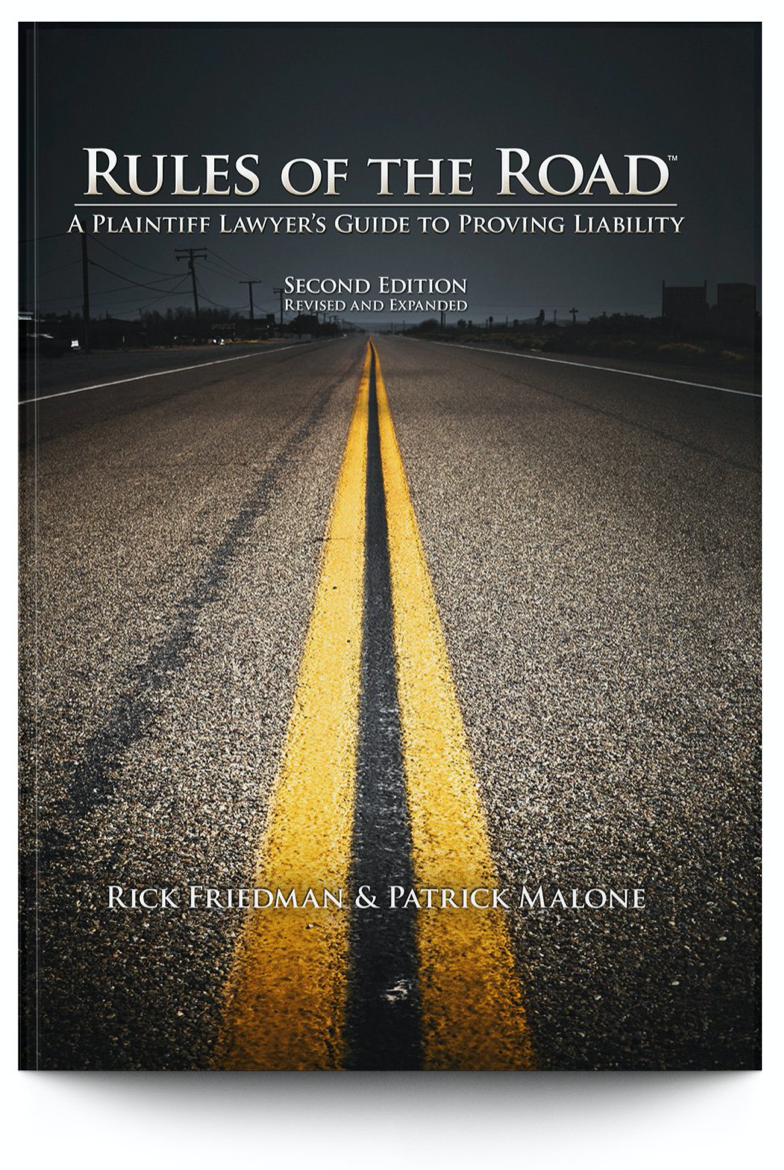Book Review of Rules of the Road 2nd Ed. by J. Michael Conley in the MATA Journal
I was reading "Rules of the Road" by Rick Friedman and Patrick Malone for the third time, not because it was difficult to comprehend on first reading — to the contrary, it is very straightforward and easy reading — and not (I hope) because I was too obtuse to understand the book the first time through, but rather because the book embodied a technique that is really a process.
As I made inroads into its application to my cases, reviewing the book would focus me on the next step or reveal the next layer of opportunity.
As I managed to utilize one idea or experienced difficulty with another, other aspects of the book became more meaningful or useful.
Halfway through the third reading I stopped. A second edition had arrived: "Rules of the Road, A Plaintiff’s Lawyer’s Guide to Proving Liability Second Edition Revised and Expanded," Trial Guides 2010. It turns out that while we were all working through the process to adapt and apply the Rules approach to our cases, so were the authors.
The preface begins, "We’ve learned a lot in the five years since the first edition of this book was published." The second edition delivers the information contained in the first and builds on it with new and important suggestions and observations.
It had already become axiomatic that anyone representing plaintiffs in serious tort cases should be familiar with "Rules of the Road." I suggest that even (or perhaps especially) those familiar with the original work should consider the second edition a must-read.
Drawing on additional years of experience in their own cases, from teaching and working with and comparing experiences with plaintiff’s trial lawyers, Friedman and Malone have significantly advanced the process presented in the original book.
In addition to updating the original work, the authors have identified and addressed problem issues, such as use of the Rules in car crash cases, muddying the distinction between the Rules and their antecedent safety principles, and integrating the Rules into the case story. (There is also a new chapter on rules in voir dire. Be an optimist and don’t skip over it). There are also lists of sample rules and an appendix rich with examples of how the Rules may be used throughout discovery and trial. This book is inexpensive and indispensable. You can get it at trialguides.com.
Reprinted with permission of MATA Journal, May 2011, Massachusetts Academy of Trial Attorneys.

